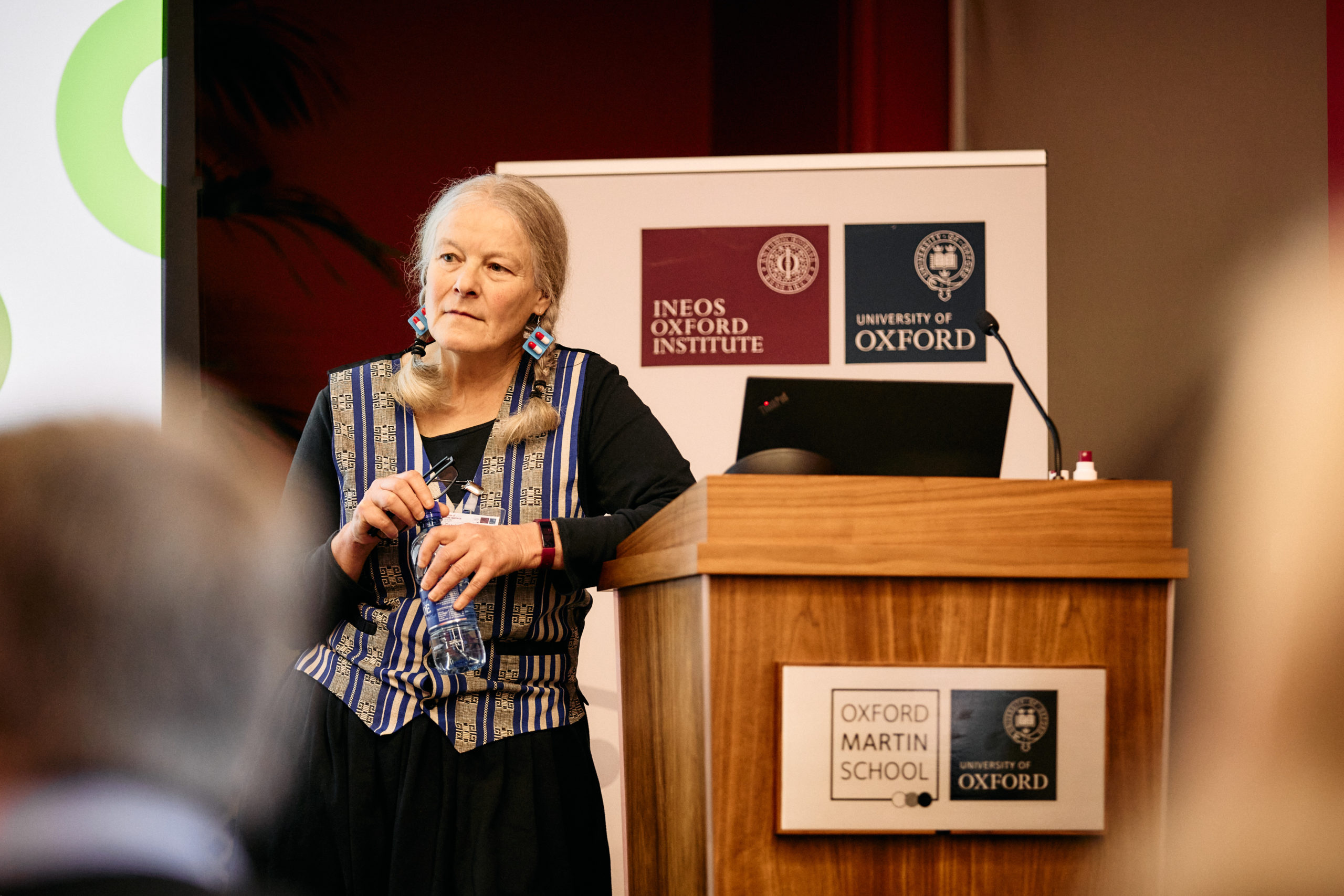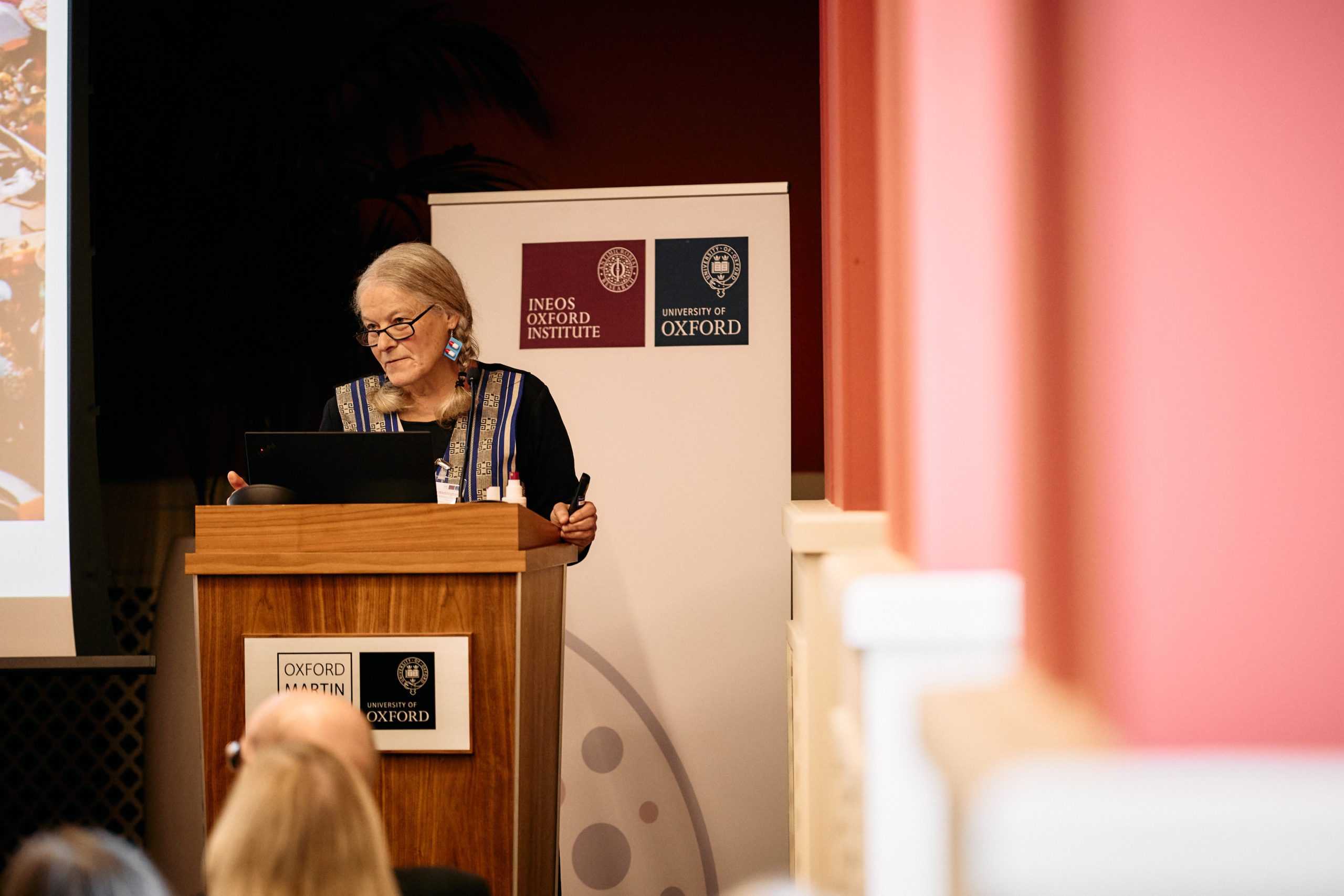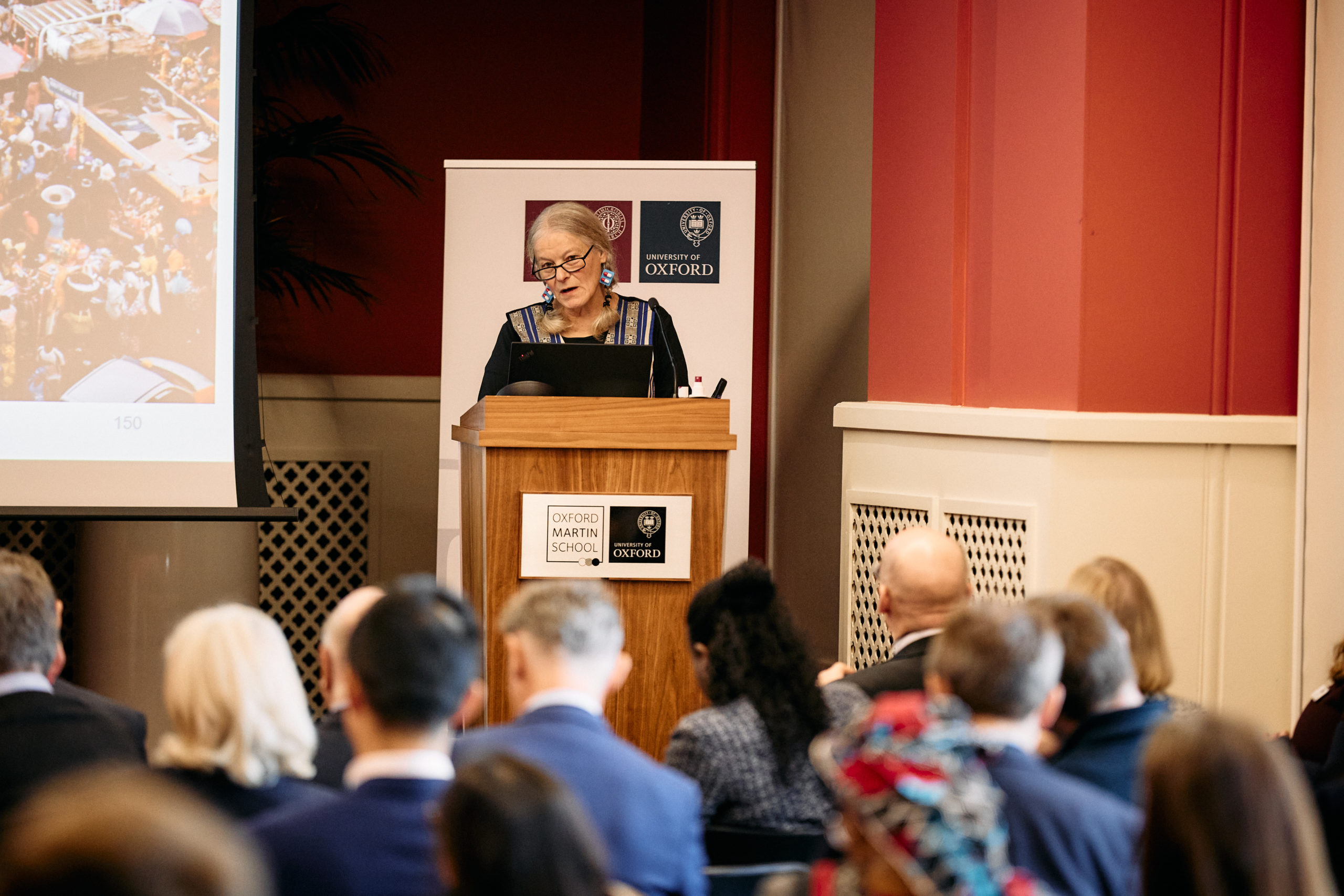With global Sustainable Development Goals (SDGs) threatened by antimicrobial resistance (AMR), how can social science play a critical role in finding solutions?
AMR surveillance and the public good - the question of cost
As part of World Antimicrobial Awareness Week 2022 in November last year, Head of the Fleming Fund’s Expert Advisory Group Dr Catriona Waddington joined an esteemed panel of speakers from the AMR community at the symposium, ‘The rising tide of antimicrobial resistance – a high price to pay’ hosted by Ineos Oxford Institute, Oxford Martin School.
The event brought together thought leaders from multiple sectors within the AMR community to discuss the present issues and new opportunities for investment. Dr Waddington is an Economist who works for the Fleming Fund's Management Agent Mott MacDonald, and spoke about AMR data surveillance as a necessary solution in low- and middle-income countries (LMICs) – surveillance should be seen as a ‘global public good’ and a key feature of government budgets and policy.
However, how this is funded is a challenging issue, given the levels of governments’ health budgets. Diagnostic testing is not the norm in many health care systems in LMICs – often it simply doesn’t happen and, if it does, patients frequently need to pay for this themselves.
Dr Waddington discusses her presentation ‘The economics of surveillance in low- and middle-income countries’ given at the University of Oxford, UK.

Dr Catriona Waddington presenting on costing AMR surveillance in LMICs at the University of Oxford, UK. Copyright David Fisher, all rights reserved.
How much does it cost to run a national AMR surveillance programme? This is an important question, both for national planning and international advocacy, and one which will be explored in some detail during phase II of the Fleming Fund.
We have some preliminary information from surveys conducted in Uganda. This suggests that the average annual cost of operating an AMR surveillance system for human and animal health is £2.5 million, with an additional £300,000 per year for basic environmental surveillance. This is a broad estimate produced by Mott MacDonald which will be refined over the next few years.
To put this into perspective, £2.5 million represents the entire health expenditure of about 86,000 people in a low-income country, or of 33,000 in an LMIC.
What might appear a relatively small amount in one country (£2.5 million is the annual budget for a 360 pupil secondary school in the UK) is very expensive in another.
Surveillance should be seen as a ‘global public good’ and a key feature of government budgets and policy.
Dr Catriona Waddington
Covering the costs
There are several ways in which the Fleming Fund is working to promote the sustainability of AMR surveillance in the LMICs where it works with grantees, fellows, and wider partners. Ideally, the policymakers we partner with will help prioritise AMR surveillance so that this essential cost is integrated within a government’s national budget.
Other practical ways of institutionalising government financial support are the inclusion of reagents and other consumables in nationally endorsed Essential Drug and Equipment Lists, and the inclusion of key AMR posts on the approved government staff establishment list.

Dr Catriona Waddington. Copyright David Fisher, all rights reserved.
As for many public goods, the costs of surveillance are incurred now, but the benefits should be reaped far into the future.
Dr Catriona Waddington
There are many promising signs of sustainability driven by the Fleming Fund:
- The Timor-Leste government is gradually covering an increasing portion of the costs of the laboratory consumables used in AMR data surveillance.
- The Eswatini government has incorporated relevant reagents and consumables in the national budget and has already released some funds for these items. Consideration is being given to including such items in ongoing requests to international funders.
- The Malawi government has a budget line for AMR and AMR is included in the health sector strategic plan. Some funds have been made available to support awareness activities and the AMR Secretariat. Yet, AMR in agriculture remains dependent on funding from international partners.
- The Tanzania government has a budget line in animal health for AMR. The Tanzania Veterinary Laboratory Agency has procured some reagents for animal health laboratories.
- A new microbiologist position has been created in Nepal in the National Public Health Laboratory to handle increased work related to AMR. Nepal has also issued its first ever therapeutic guidelines for animal health, which will help to improve antimicrobial use (AMU).
- The Bangladesh government has demonstrated the importance of the AMR Technical Working Group by starting to fund its own meetings.
- The Indonesia government has identified Technical Leads in relevant directorates; AMR is a major part of their role in the respective ministries.
Realistically, we must think of international financial support for AMR surveillance in some countries over the medium term. AMR surveillance is a Global Public Good, meaning that the benefits of surveillance reach beyond the boundaries of a particular country.
Sustained benefits
As for many public goods, the costs of surveillance are incurred now, but the benefits should be reaped far into the future. With the international flow of people and animals – and the infections which cause them harm – it makes sense for international governments to come together to address this for the good of their public.
Covering the cost of surveillance is a necessary but not sufficient part of tackling AMR. While considering what governments and the international health community can pay for, it is important not to forget the perspective of the patient and the farmer.

Dr Catriona Waddington. Copyright David Fisher, all rights reserved.
Most transactions for antimicrobials in the world are commercial purchases – it is the exception for antimicrobials to be prescribed solely as a health professional decision. Patients and farmers in many countries forego medically-needed antimicrobials – or buy sub-optimal amounts or low-quality medicines – because of the cost.
The same applies to diagnosis – paying for a test is often skipped as a stage because of the cost. The FAO also acknowledges antimicrobial misuse and over-use in the livestock sector; aquaculture and crop production are major concerns as a risk for the spread of antimicrobial resistance in food production and polluting surrounding environments.
Tackling this issue of cost, notably through developing some form of social health insurance in the form of data surveillance and analysis, is a key step in addressing the ever-growing problem of AMR.
See the video here.
For more information on World Antimicrobial Awareness Week, see the WHO page here.
Information on the symposium ‘The rising tide of antimicrobial resistance – a high price to pay’, hosted by Ineous Oxford Institute, Oxford Martin School, is available on their website.
More Like This
Knowledge Notes
From Knowledge Notes, Beyond Bugs and Drugs, an AMR social science opportunity , Date: 11/08/2023
Knowledge Notes
From Knowledge Notes, One Health: breaking down silos and driving the Fleming Fund forward , Date: 03/11/2023
To mark One Health Day, we revisit the holistic concept spanning human, animal, and environmental health, which is one of the Fleming Fund’s guiding principles.